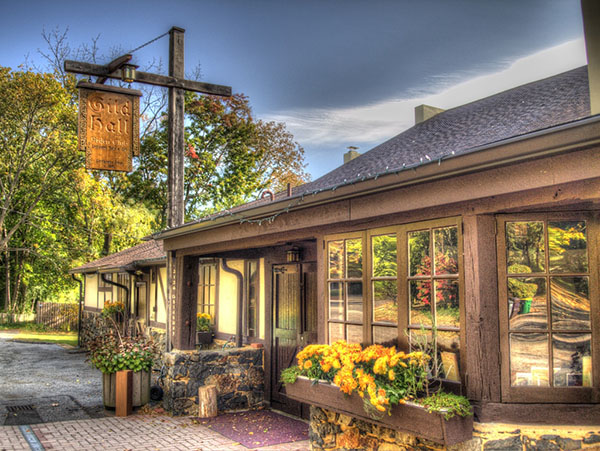From farmstead to small village, Arden, Delaware is rich in artistic creativity and entertaining history.
Small town America is a vast and enchanting series of histories that have shaped millions of lives for hundreds of years. Some American towns were established far before the Revolutionary War, and others were built person by person, building by building at different intervals of time. Founded by Frank Stephens and William Price with financial help from Joseph Fels, the town of Arden, Delaware was established during the turn of the Twentieth Century.
A Change from Farm to a Nod to Shakespeare
The land now known as Arden, Delaware began as the Derrickson Farmstead. For seven generations it was farmed by the Derrickson family. The family had it set up as a series of three tracks of land that added up to approximately 162 acres of land. This land was bought in 1900 by Stephens, Price and Fels. It took about ten years for the layout of Arden to be finalized. The concept was a series of open fields, wooded areas, and walking paths that connect together throughout Arden and the surrounding areas. The ideas for the layout was Ebenezer Howard’s Garden Cities of Tomorrow. The design was for people to live in close proximity to each other to have a community feel, but be surrounded by nature to enjoy and be inspired by.
The village of Arden is named for the tranquil forest that was mentioned in William Shakespeare’s play As You Like It. Originally it was used as a summer getaway for approximately 150 people. With each year more people decided to permanently live in the village. The village is centered around Village Green, which has open fields, the Frank Stephens Memorial Theater, the weavers plant, and the Arts and Crafts Museum. Across the village lies the Arden Guild Hall, which is the renovated barn of the Derrickson farmstead, the Buzz Ware Village Center and more open fields known as Sherwood Green.
Premise of Single Tax in Collaboration with Art
In the last years of the nineteenth century, political drama was unfolding. In Philadelphia, for example, a small independent political party began to emerge with the notion of a Single Tax theory. This political party was then aptly named the Philadelphia Single Tax Society. These theorists were major proponents of reformer Henry George, who published Progress and Poverty. This was a renewed view on an old political idea that is worldwide: place a single tax on land, and no other property. This single tax should then be used as the sole revenue of the government. Delaware was chosen for the experiment due to it’s location in another state but close proximity to Philadelphia where Stephens and Price lived in the off season. Due to laws that are state and federal backed, full achievement of the Single Tax theory is not possible in Arden, Delaware.
Many of the inhabitants of Arden’s early years were social activists, artists, theater enthusiasts, musicians, and authors. They lived in Arden in cottages, tents or small cabins. One such political figure and author living in Arden for a couple of years was Upton Sinclair. He is known for his work, The Jungle. For the creative sector of Arden, practitioners were well versed in the words of William Morris, who wrote The Socialist Ideal. His theory was to build communities that were designed to fuel creativity.
In the first fifty years of Arden’s inception, Arden outgrew it’s original 162 acres. In the 1920’s, Ardentown was added. Then in 1950, Ardencroft was established as well and added as a hamlet of Arden. All three areas, Arden, Ardentown and Ardencroft all follow the single tax system, and have full use of the lands and public buildings found in the two zones: Village Green, and Sherwood Green. It hasn’t made headlines recently, but Arden is still seen as a unique way of how a community is able to build it’s own providence through political ideologies as well as through the strength of artistry.
Sources:
- Eckman, Jeannette & William J. Conner. Editors. (1938). Delaware: A Guide to the Fist State. New York, New York: The Viking Press.
- Maynard, W. Barksdale. (2008). Buildings of Delaware. Charlottesville, Virginia: University of Virginia Press.
- Taylor, Mark. (2002). “Utopia by Taxation: Frank Stephens and the Single Tax Community of Arden, Delaware” The Pennsylvania Magazine of History and Biography, Vol. 126, No. 2. Philadelphia, Pennsylvania: The Historical Society of Pennsylvania.








